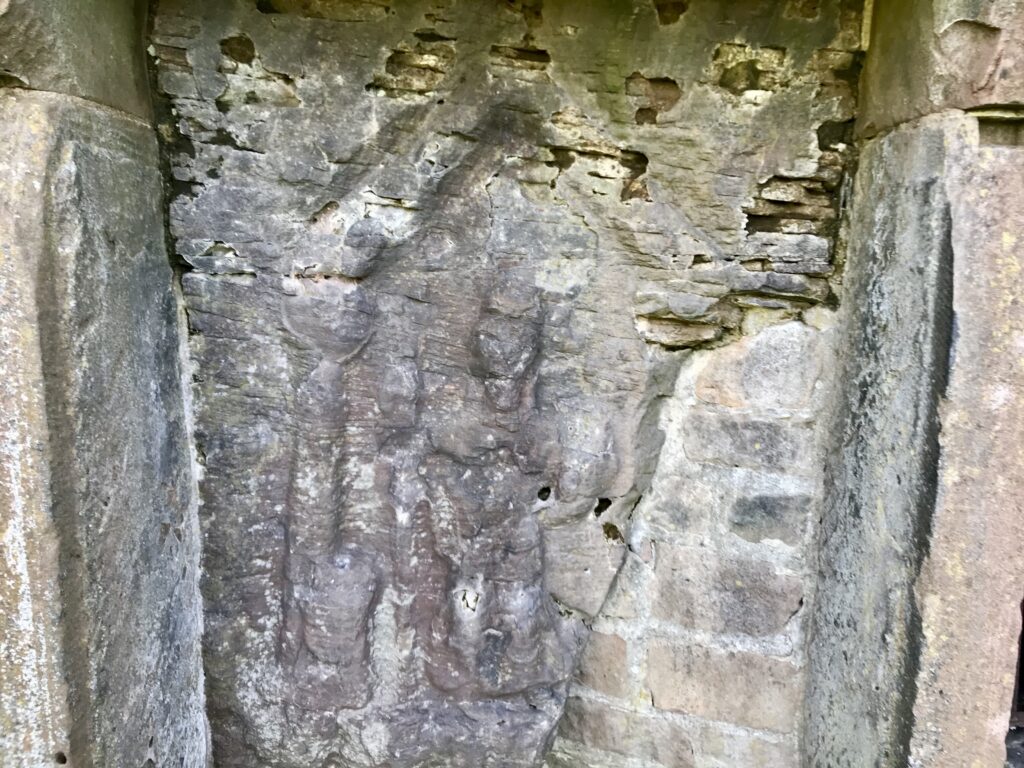This site is one of Chester’s hidden gems.
Indeed, I used to regularly take my children to this local park, but it was ages before I realised there was a 2,000-year-old historical artefact just behind the swings.
The park is Edgar’s Field in Handbridge and the carving is the Roman goddess Minerva [pictured above].
The shrine is said to have been carved into the sandstone in the second century AD and is believed to the only site in Europe still in its original location, according to experts at Historic England.
Today we’ve come for an audience with Minerva.
Minerva was the patron of arts and craftsmen and, later in Roman history, she became the goddess of war with temples in Rome devoted to her.
She was often portrayed wearing a chiton, which is an ancient Greek garment, and a helmet. Many statues of her show her holding a spear and a shield, to represent her warlike qualities.
But she can often be found offering an olive branch to the defeated as Minerva was a compassionate victor, who had pity on those her armies vanquished.
This is now a quiet park on the banks of the River Dee but it was once a massive quarry, excavating the huge blocks of sandstone to build Chester’s Roman walls.
And this weathered rock shrine was once a site of ancient Roman worship.
The quarrymen, who carved the effigy, would have made offerings and prayed for safety during their gruelling, risky labour.
Sadly, Minerva looks a bit the worse for wear these days — the weather and vandalism have seen to that. But you can still pick out her figure holding a spear and wearing a helmet, an owl over her shoulder on the right.
The awning over the shrine is a 19th-century addition, placed there in the hopes of warding off further damage.
Edgar’s Field dates from the Saxon period and gets its name from King Edgar, the great-grandson of Alfred the Great, who held a council in or near the field in 973AD.
From here the king visited nearby St Johns Church, which was built in 689 AD. Writings from this time describe the scene of Edgar being rowed up the Dee by eight Saxon, Welsh and Viking princes as an act of submission — a romantic image forever associated with Chester.
Edgar’s Field was laid out as a public park by the first Duke of Westminster, Hugh Lupus Grosvenor, who presented it to the City of Chester in 1892 as an act of philanthropy.
My children are grown up now — but I still come to visit Minerva.
I love the way that Chester may change yet Minerva stands, serene and stoic, keeping watch over the good people of Handbridge from her freeze-frame stone tomb.
- Liked this? Try also Lockdown loafing: an audience with a Roman goddess.
- Sign up to my newsletter, Hit the North, for travel news close to my Chester home.
